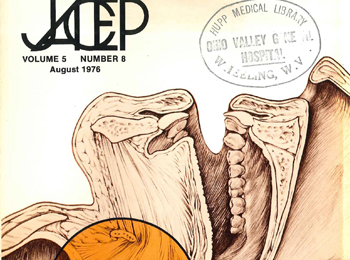
Rapid sequence intubation in emergency airways, end-tidal CO2 detection for verification of tube placement, “O’s up the nose,” apneic oxygenation, and video laryngoscopy—all the major components of current airway practices—have been pioneered, researched, and validated by emergency physicians.
Explore This Issue
ACEP Now: Vol 37 – No 08 – August 2018It is not coincidental, but rather something the pioneers of our specialty intended, that the academic advancement of emergency medicine would improve patient care. This can certainly be seen in myocardial infarction, stroke, and sepsis. Although I’m biased, I am especially proud of emergency medicine’s role in improving emergency airway management.
When I chose emergency medicine as a specialty, I was told by my medical school dean that we were “just triage doctors.” I now see growing validation of emergency medicine’s approach to airway management as well as visible evidence that our contributions have been leading the way.
Check out the following five articles—among my favorites by emergency physicians—and give a pat on the back to the authors whose work has improved your practice and boosted patient safety:
- Driver BE, Prekker ME, Klein LK, et al. Effect of use of a bougie vs endotracheal tube and stylet on first-attempt intubation success among patients with difficult airways undergoing emergency intubation: a randomized clinical trial. JAMA. 2018;319(21):2179-2189. (recommended by Dr. Levitan)
- Kovacs G, Sowers N. Airway management in trauma. Emerg Med Clin North Am. 2018;36(1):61-84. (recommended by Dr. Kovacs)
- Sakles JC, Chiu S, Mosier J, et al. The importance of first pass success when performing orotracheal intubation in the emergency department. Acad Emerg Med. 2013;20(1):71-78. (recommended by Dr. Sakles)
- Walls RM, Brown CA 3rd, Bair AE, et al. NEAR II Investigators. emergency airway management: a multi-center report of 8937 emergency department intubations. J Emerg Med. 2011;41(4):347-354. (recommended by Dr. Walls)
- Weingart SD, Levitan RM. Preoxygenation and prevention of desaturation during emergency airway management. Ann Emerg Med. 2012;59(3):165-175. (recommended by Dr. Levitan)
Reference
- Chang RS, Hamilton RJ, Carter WA. Declining rate of cricothyrotomy in trauma patients with an emergency medicine residency: implications for skills training. Acad Emerg Med. 1998;5(3):247-251.
Pages: 1 2 3 | Single Page





One Response to “Emergency Medicine’s 50-Year Evolution of Airway Management”
September 2, 2018
Helio Penna GuimaraesDear Prof Levitan:
Thanks a lot fir this very nice lecture ! Definitely the airway management became more effective and secure , in ER, after the Emergency Medicine specialty was establishid.